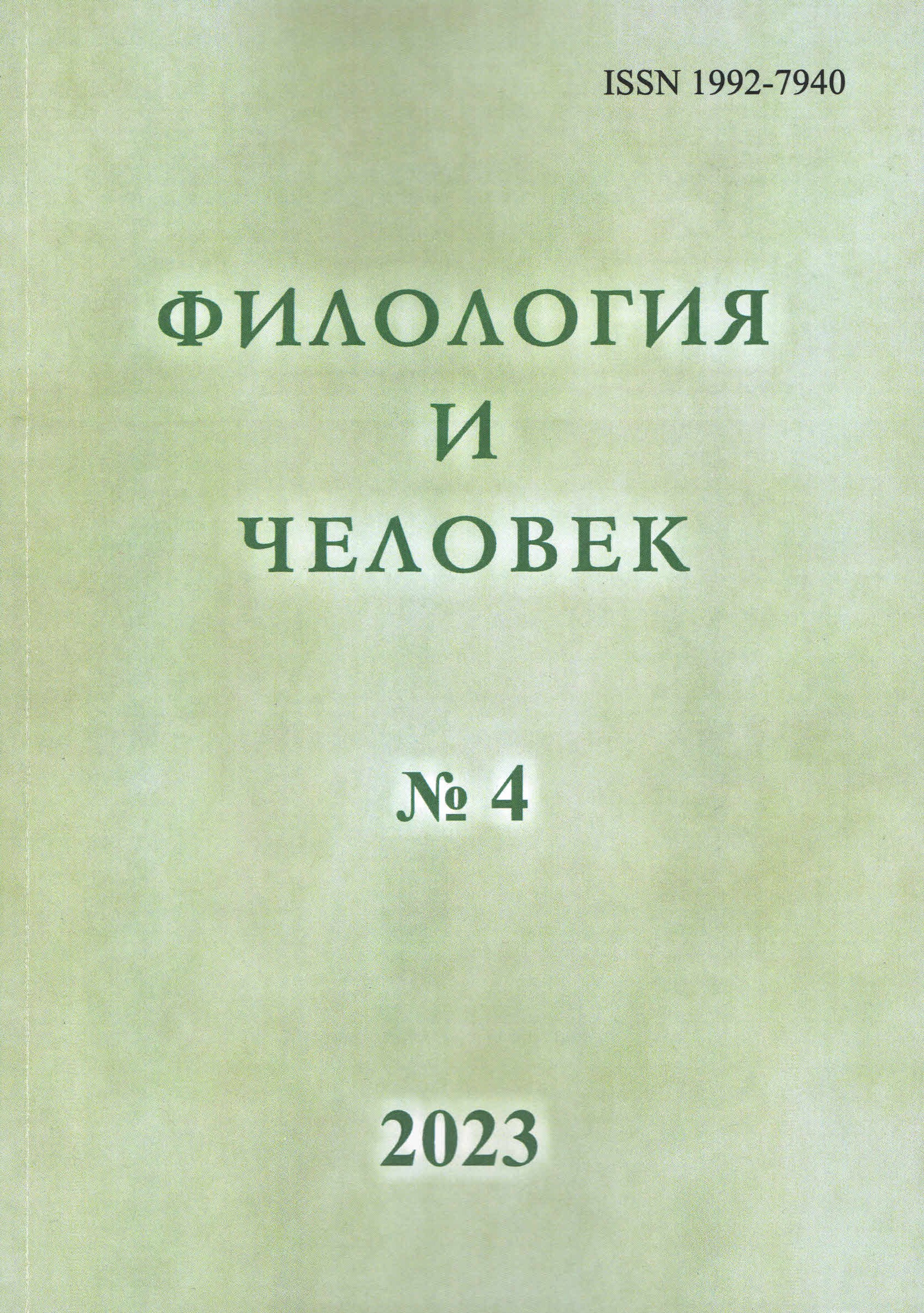Anonymous English Poem of the 14th century The King of Tars: Xenophobia as a Modality of the Plot and Language Motives
Abstract
This article is a pilot study of the content features of the English tale of chivalry King of Tarsus and a description of the main features of its poetics. To this day the epic poem remains in the status of underestimated by English-speaking literary critics and unfamiliar to Russian linguists. One of the purposes of the article is to highlight the most striking features of the plot and language of the text, which could further attract some researchers. Particular attention is paid to the ways of solving the ideological task that the anonymous author faced, those plot and verbal motives that materialized the opposition of the Saracens to the Christians. It involves the creation of images of the Saracens with help of exotic nominations, animalistic speech description and black color symbolization to express their "pagan" faith. The main result of the study is defining the text's focus on inciting xenophobia among English readers. The identification of symmetry as the organizing structural principle of this text is another result of the research.
Downloads
Metrics
References
Библиографический список
Calkin S.B. Marking Religion on the Body: Saracens, Categorization, and "The King of Tars" // The Journal of English and Germanic Philology. Vol. 104. №2. 2005.
Czarnowus A. “Stille as ston”: Oriental deformity in "The King of Tars" // Studia Anglica Posnaniensia. Vol. 44. 2008.
Geist R.J. On the Genesis of "The King of Tars" // The Journal of English and Germanic Philology. Vol. 42. № 2. 1943.
Hibbard L.A. Mediaeval Romance in England: A Study of the Sources and Analogues of the Non-cyclic Metrical Romances. N.Y.,1963.
Hornstein L.H. Trivet's Constance and the King of Tars // Modern Language Notes. Vol. 55. №5. 1940.
Hornstein L.H. The Historical Background of the King of Tars // Speculum. Vol. 16. №4. 1941.
Metlitzki D. The Matter of Araby in Medieval England. London, 1977.
Peck R.A. Number as Cosmic Language // Essays in the Numerical Criticism of Medieval Literature. Lewisburg, 1980.
Shipley J.T. Dictionary of Word Origins. 2nd ed. N.Y., 1945.
Strickland D.H. Saracens, demons, and Jews: Making monsters in Medieval art. Oxford, 2003.
Whitaker C.J. Black Metaphors in the King of Tars // The Journal of English and Germanic Philology. Vol. 112. №2. 2013.
Список источников
Perryman J., ed. The King of Tars: Edited from the Auchinleck Manuscript, Advocates 19.2.1. Middle English Texts 12. Heidelberg, 1980.
Walsingham Thomæ. Historia Anglicana. Vol. I: A.D. 1272-1381. London, 1863.
References
Calkin S.B. Marking Religion on the Body: Saracens, Categorization, and "The King of Tars". The Journal of English and Germanic Philology. 2005. Vol. 104. No. 2.
Czarnowus A. “Stille as ston”: Oriental deformity in "The King of Tars". Studia Anglica Posnaniensia. 2008. Vol. 44.
Geist R.J. On the Genesis of "The King of Tars". The Journal of English and Germanic Philology. 1943. Vol. 42. No. 2.
Hibbard L.A. Mediaeval Romance in England: A Study of the Sources and Analogues of the Non-cyclic Metrical Romances. New York, 1963.
Hornstein L.H. Trivet's Constance and the King of Tars. Modern Language Notes. 1940. Vol. 55. No. 5.
Hornstein L.H. The Historical Background of the King of Tars. Speculum. 1941. Vol. 16. No. 4.
Metlitzki D. The Matter of Araby in Medieval England. London, 1977.
Peck R.A. Number as Cosmic Language. Essays in the Numerical Criticism of Medieval Literature. Lewisburg, 1980.
Shipley J.T. Dictionary of Word Origins. 2nd ed. New York, 1945.
Strickland, D.H. Saracens, demons, and Jews: Making monsters in Medieval art. Oxford, 2003.
Whitaker C.J. Black Metaphors in the King of Tars. The Journal of English and Germanic Philology. 2013. Vol. 112. No. 2.
List of sources
Perryman J., ed. The King of Tars: Edited from the Auchinleck Manuscript, Advocates 19.2.1. Middle English Texts 12. Heidelberg, 1980.
Walsingham Thomæ. Historia Anglicana. Vol. I: A.D. 1272-1381. London, 1863.
Редакционная коллегия научного журнала «Филология и человек» придерживается принятых международным сообществом принципов публикационной этики, отраженных, в частности, в рекомендациях Комитета по этике научных публикаций (Committee on Publication Ethics (COPE), Кодекс этики научных публикаций), а также учитываeт ценный опыт авторитетных международных журналов и издательств.
Во избежание недобросовестной практики в публикационной деятельности (плагиат, изложение недостоверных сведений и др.), в целях обеспечения высокого качества научных публикаций, признания общественностью полученных автором научных результатов каждый член редакционной коллегии, автор, рецензент, издатель, а также учреждения, участвующие в издательском процессе, обязаны соблюдать этические стандарты, нормы и правила и принимать все разумные меры для предотвращения их нарушений. Соблюдение правил этики научных публикаций всеми участниками этого процесса способствует обеспечению прав авторов на интеллектуальную собственность, повышению качества издания и исключению возможности неправомерного использования авторских материалов в интересах отдельных лиц.





